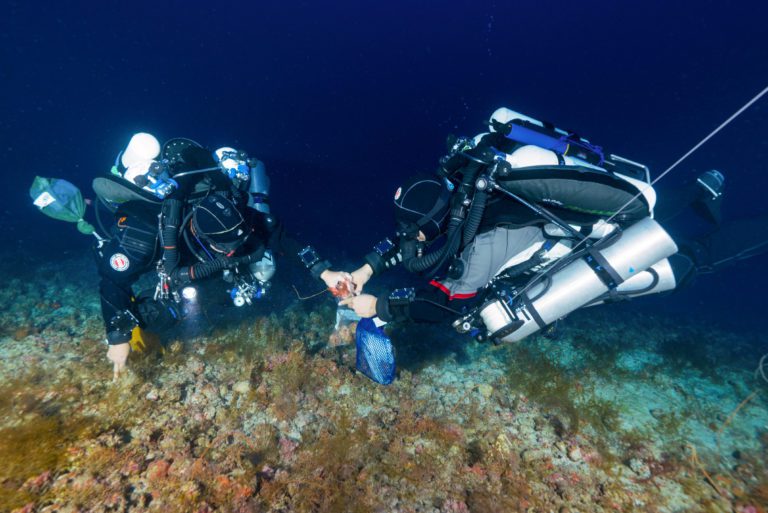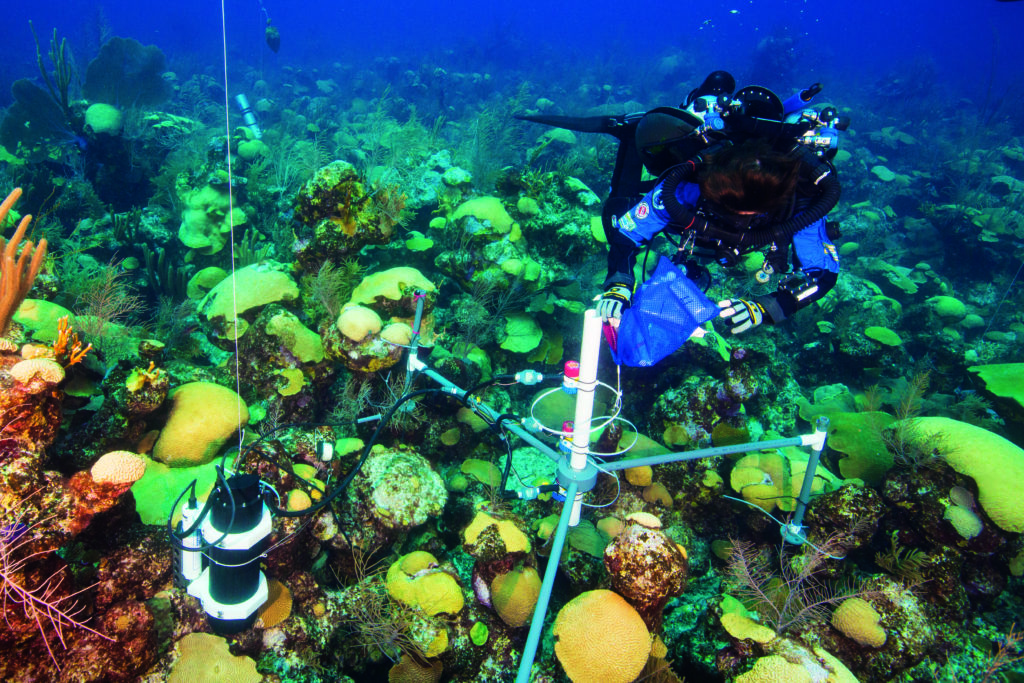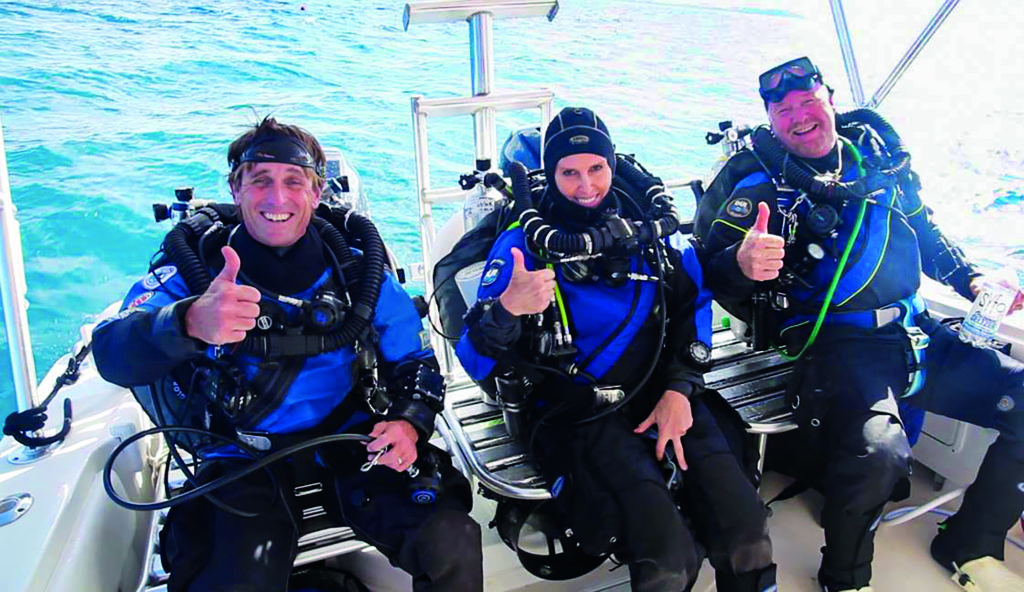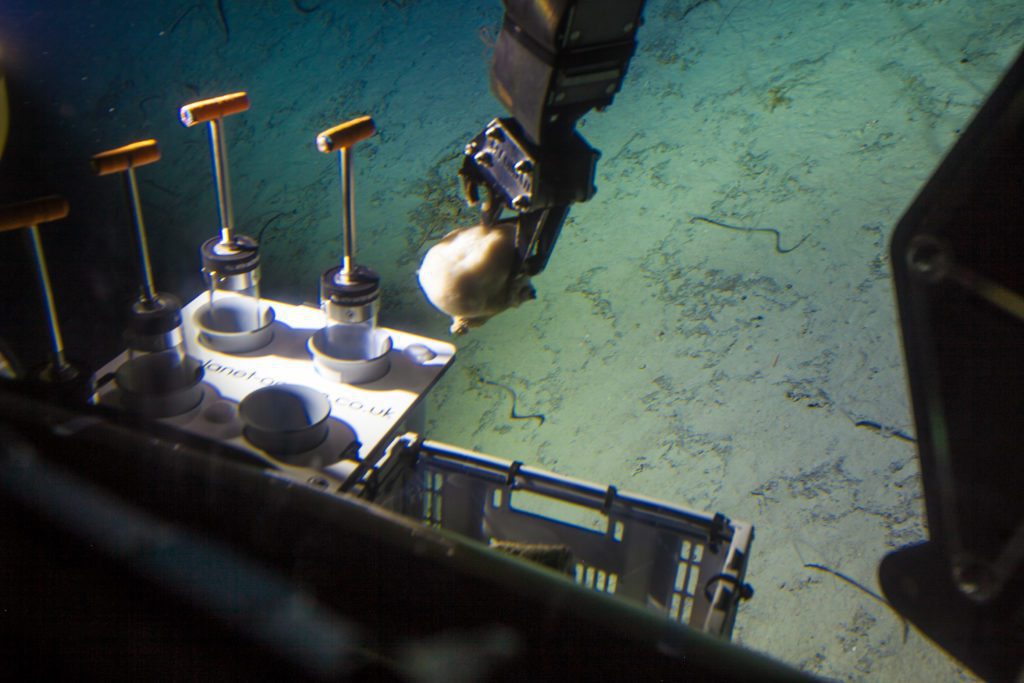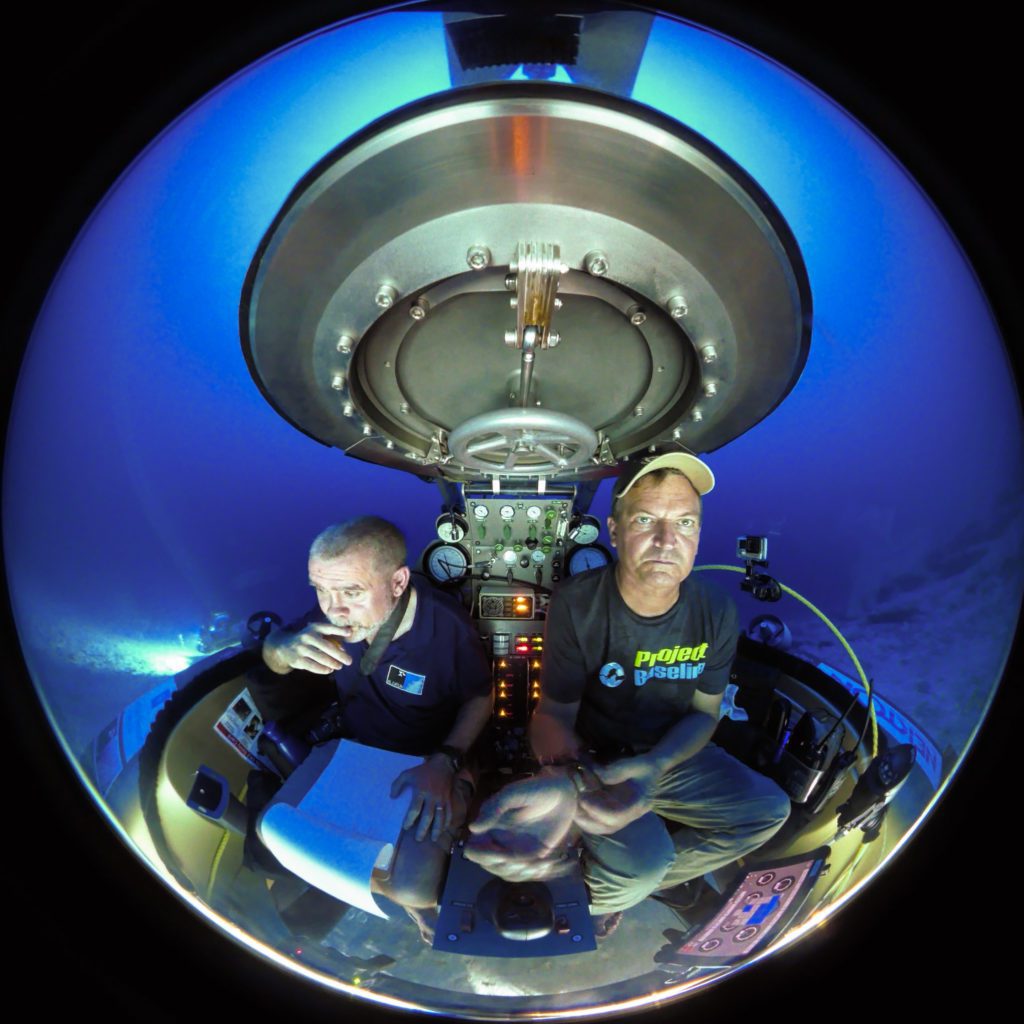The deep oceans play a critical part in sustaining life on this planet, but we know precious little about them. JASON BROWN talks to a member of a cutting-edge dive-team that set out to reveal some of the Atlantic’s secrets
Also read: Ocean Census targets 100k unknown marine species
What did you do on your last dive? Did you swim around admiring the marine flora and fauna? Or perhaps you’re a wreck-diver who enjoys nothing more than visiting your favourite shipwreck.
For divers involved in a Nekton mission to explore the deep ecosystems around the Atlantic islands of Bermuda there was little time to take in the sights – for them, every dive was about achieving an objective to further our understanding of the health of the world’s deep oceans.
Down to the Bathyal Zone
The oceans cover 70% of the Earth’s surface and contain 97% of all our water, yet we take them so much for granted. Much of what we know is restricted to the relative shallows but the deep ocean, the critical part, is the region we know least about. The Bathyal Zone, located between 200 and 2,000m below the surface, is home to the greatest diversity of marine life on the planet.
This zone contains all the critical indicators of ocean health, and its effect on Earth is far-reaching as it performs the essential task of absorbing carbon dioxide and helping to regulate the climate. Like so many delicate ecosystems, however, the Bathyal Zone is under constant threat from human exploitation because of the wealth of oil, gas and fish-stocks that lie within it.
Only in recent years have we begun to appreciate the importance that the deep ocean plays in regulating Earth’s life-support systems. For greater insight, the charitable foundation Nekton teamed up with key players including UNESCO, Oxford University and Global Underwater Explorers (GUE) to deliver the XL Catlin Deep Ocean Survey.
Nekton’s mission was ambitious – to create a baseline to measure change in the function, health and resilience of the deep ocean, so that scientists and key decision-makers could use it to influence future policy and attitudes towards the ocean.
Nekton chose Bermuda for the initial phase of the initiative because it had been the location for some of the very first deep submersibles dives. Nestled at the western edge of the Sargasso Sea, near the transition into the Gulf Stream, Bermuda is a collection of 130 coral islands capping an ancient volcano that rises from 3,000m to the surface. It sits atop the transition zone between the shallow and deep ocean.
Volunteer technical divers
Nekton partnered with Project Baseline, an environmental monitoring initiative established by diver training agency GUE. Set up in 1999, it was intended to empower scuba divers through citizen-science to observe and record changes within the world’s underwater environments.
Groups of like-minded divers are actively encouraged to set up their own projects, with data collected and recorded into a vast online database. In the UK alone, there are three Project Baseline sites.
Baseline projects don’t need to be deep or technical – the Portland Harbour wrecks project in Dorset monitors sites in less than 15m of water, making it perfect for divers of any level.
While Nekton’s own science team included divers with experience in conducting science projects under water, they lacked the equipment, procedures and training to carry out complex dive operations beyond recreational dive limits. So GUE sent a team of nine volunteer technical divers to work alongside its scientists aboard Project Baseline’s own research vessel Baseline Explorer.
Over the course of 27 days this team, led by science & conservation director Todd Kincaid, documented 13 miles of reef at depths ranging from 15m down to 90m. For deeper dives, the team employed Baseline Explorer’s own submersibles to take the researchers to depths down to 250m.
Run-time bonuses
The UK was represented on the dive-team by Dorset-based Graham Blackmore, a GUE technical and rebreather instructor who had been actively involved in exploration and science projects over the years. For him, the Nekton mission was a perfect fit for his own academic background, and echoed what first got him interested in diving.
“I have a PhD in marine biology and that’s really what inspired me to learn to dive. I felt that I was missing out on a huge amount of what was happening with marine biology by only being able to see what was going on above the waterline,” he says.
“So when I was studying for my PhD, I learnt to dive. That’s really when I found GUE – they took my diving to a new level and enabled me to travel the world and dive with like-minded divers and conduct some relatively aggressive diving down to 120m-plus.
“I’ve done a lot of research work on corals in shallow water, so I was very comfortable conducting video transects, sampling corals under water and collecting water samples, so it worked out quite well.
“On this project we worked as three-person teams – we had a guy laying out the transects, somebody else to video the transects and then the third person to manage the marker that we needed to resurface.”
Conducting all this scientific investigation takes time, and the teams endured some pretty aggressive diving to achieve their objectives. “We were doing six- to seven-hour run-times with something like 40-60 minutes at 90-100m. We would then move up to 60m and do a further 20-60 minutes before moving up to 30m to do another hour.
“When we started the project, the plan was really to achieve one level on one dive, but when you run the profiles you find out that if you do an hour at 30m after an hour at 90m, it doesn’t change the decompression a great deal – so you almost get that 30m dive for free.
“Running the profiles, it was quite interesting to see the run-time increase by an hour, but the total time to surface remain very, very similar.”
Rebreather solution
Not surprisingly, traditional open-circuit equipment was hardly an option, because the sheer volume of gas required to complete the profiles the dive-team were conducting would have been unmanageable above and below water. So to make life easier the dive-team used JJ-CCR rebreathers in a GUE configuration.
This set-up gave the team access to a large amount of accessible bail-out back-mounted on the rebreathers via a pair of seven-litre diluent tanks. The flexibility that the rebreathers delivered allowed the divers to conduct fairly aggressive multi-level dives without having to carry specific mixes for those depths.
The rebreathers made life a lot easier for those team-members pumping gas, too. With little more than 50 bar of diluent and approximately 150 bar of oxygen being used on a seven-hour dive, the gas-blenders didn’t need to chalk up any overtime refilling cylinders.
“There was a nice, friendly rivalry between the submersibles and the divers,” says Blackmore. “The subs are multi-million pound pieces of equipment and quite complicated, with long check-lists and huge amounts of fettling needed in order to get them ready to go diving. We often had to stand on the back deck and sweat in our drysuits while we waited for the subs to be ready.
“Of course, the real benefit of the subs is that they can take someone who can’t dive to an environment they wouldn’t otherwise be able to experience. It means being able to take a scientist under water so that they can actually see what’s going on at the bottom and how the divers collect the data, and to be able to communicate with the dive-team through the 90mm-thick pressurised acrylic dome that surrounds them.”
Two functional hands
As the project progressed, the co-ordination between the divers and the submersibles began to pay real dividends for the science team. The submersibles might be sophisticated but their interaction with the environment was limited by the quite primitive and clunky manipulator arm that the sub-team were forced to use to pick up samples – they could spend an entire dive fumbling to pick up a rock and place it into the sub’s collector basket.
As Blackmore explains, introducing divers into the equation made life a lot easier for the scientists. “A diver has two functional hands and can swim up to something, pick it up, show it to the scientist in the sub, twist it around, turn it over and so on. There was real delight on the scientists’ faces when they were able to interact with somebody who could act as their hands in the environment.”
The dive and submersible teams collected a mountain of data for evaluation by Nekton’s scientists at their base in Oxford. The scientists believed they had identified a number of new species and made discoveries capable of changing the way we look at the health of the world’s deep oceans.
With legal protection of the oceans still so sadly lacking, despite calls from the UN to establish more protected zones, the work that Nekton and the divers from Project Baseline have been doing will prove invaluable in winning hearts and minds. If the rainforests are the lungs of the planet, it’s clear that the oceans are its heart.
Photographs by Graham Blackmore, JP Bresser, Su Eun Kim – Project Baseline
Also on Divernet: Trapping Zone: Mystery Canteen For maldives Sharks, Nekton Issues 360° Deep Ocean Video, 9 Bermuda Wrecks To Tingle Halloween Divers’ Spines, The Lost Art Of Bottle Diving
